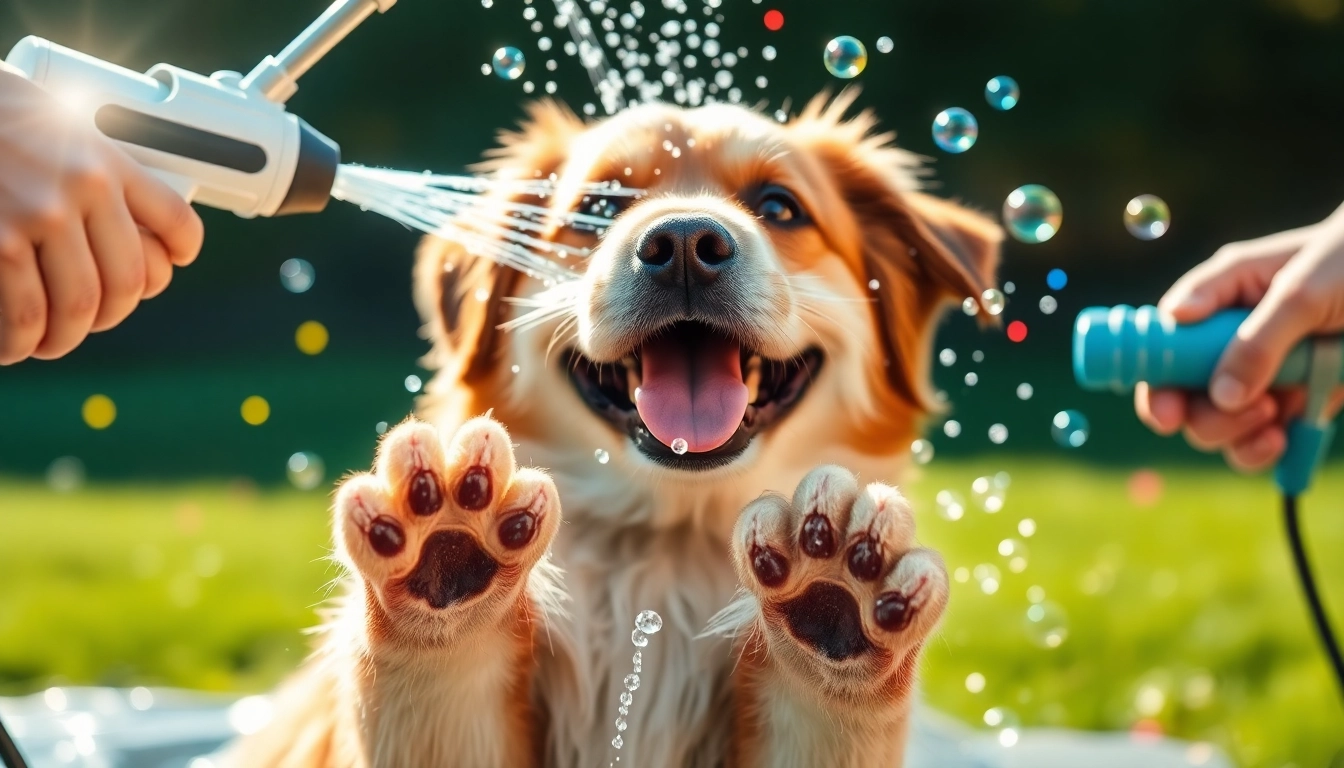1. Understanding the Importance of Dog Paws Cleaning
Dog paws are often exposed to a myriad of elements, from dirt and mud to harmful substances such as chemicals and allergens. Therefore, cleaning your dog’s paws is more than just a cosmetic procedure; it’s a significant aspect of pet care that contributes to overall canine health. With the right approach, you can ensure your furry friend remains happy and healthy. Regular dog paws cleaning can help prevent a range of health issues while enhancing your dog’s comfort and mobility.
1.1 The Role of Clean Paws in Canine Health
Maintaining clean paws aids in the prevention of infection and irritation. Accumulated dirt and moisture can lead to conditions such as pododermatitis, an inflammation of the skin on the paws. Additionally, clean paws decrease the likelihood of your dog tracking harmful substances into your home, which can affect not only their health but also that of your family.
1.2 Common Paw Problems and How Cleaning Helps
Several common issues arise from unclean paws, including:
- Infections: Bacteria and fungi flourish in dirty conditions. Regular cleaning minimizes these risks.
- Skin Irritation: Dirt and debris can cause rashes or other skin conditions.
- Pawpad Damage: Long-term exposure to rough terrain or irritants can lead to cracks and injuries.
By cleaning your dog’s paws regularly, you help mitigate these risks, ensuring a safe and healthy outdoor experience.
1.3 Identifying When Your Dog Needs a Paw Cleaning
Although regular cleaning is ideal, there are specific signs that indicate your dog’s paws need immediate attention:
- Excessive licking or chewing of the paws.
- Visible dirt or grime on the paw pads.
- Redness or inflammation observed in the paw area.
- Unusual odor emanating from the paws.
Being vigilant and responding to these signs can prevent more severe health issues down the line.
2. Choosing the Right Tools for Dog Paws Cleaning
Selecting the right tools is essential for effective and comfortable cleaning. Here’s how you can ensure you have the best hygiene tools for your pet.
2.1 Essential Grooming Tools for Pet Owners
To efficiently clean your dog’s paws, consider these essential grooming tools:
- Paw Wipes: Convenient for spot cleaning and daily touch-ups.
- Soft Brushes: Ideal for removing dirt and debris stuck between toes and pads.
- Bowls filled with Warm Water: For thorough cleaning during bath times.
2.2 Why a Shower Gun is Ideal for Dog Paws Cleaning
A shower gun is particularly advantageous for dog paws cleaning because it offers various settings that make it easier to wash paws without excessive water splashing. These tools provide a gentle yet effective spray, ensuring thorough cleansing while keeping your dog comfortable. The different modes allow for customized cleaning based on the job at hand, whether it’s a quick rinse or a deep clean.
2.3 Other Accessories to Enhance Cleaning Experience
Enhance your dogs’ cleaning routine with a few additional accessories:
- Non-slip Mat: Prevents slipping when your dog is being washed.
- Nail Clippers: Keeping nails trimmed prevents dirt accumulation and paw injuries.
- Paw Protection Products: Apply prior to walks to shield sensitive paws from irritants.
These tools help create a more positive experience for both you and your pet during the cleaning process.
3. Step-by-Step Guide to Dog Paws Cleaning
Establishing a reliable cleaning routine is essential. Here’s a detailed walkthrough to help you effectively clean your dog’s paws at home.
3.1 Preparing Your Dog for a Cleaning Session
Preparation can make all the difference in a smooth cleaning process:
- Choose a Calm Environment: Plenty of treats and reassurance can help your dog feel less anxious.
- Gather Necessary Supplies: Ensure all tools and water are ready before starting.
- Use Positive Reinforcement: Praise your dog throughout the session to create a positive association with cleaning time.
3.2 Techniques for Effective Paw Cleaning
Here’s how to clean your dog’s paws effectively:
- Inspect First: Check for any cuts, thorns, or other issues before the cleaning process.
- Wet the Paws: Using a damp cloth or the shower gun, wet the paw pads gently.
- Brush Between Toes: Use a soft brush to clean between the toes and around the nails.
- Rinse and Dry: Rinse thoroughly and then dry with a towel to prevent moisture-related infections.
3.3 Post-Cleaning Care for Healthy Paws
After cleaning, ensure to follow up with proper care:
- Paw Balm: Applying a moisturizing balm can protect and soothe paw pads.
- Regular Checks: Regularly check your dog’s paws for any signs of injury or irritation.
- Routine Grooming: Incorporate paw cleaning into regular grooming sessions.
These steps not only keep your dog’s paws clean but also help in maintaining their overall health and comfort.
4. Natural Remedies for Dog Paws Cleaning
If you prefer natural solutions, there are several safe homemade cleaning options available for your pet’s paws.
4.1 Safe Ingredients for Homemade Cleaning Solutions
When making your cleaning solution, consider these ingredients:
- Apple Cider Vinegar: Natural antibacterial properties make it an excellent cleaning agent.
- Olive Oil: Helps soothe dry and cracked paws.
- Essential Oils: Lavender and chamomile can provide a calming scent (ensure they are pet-safe).
4.2 Benefits of Using Natural Products
Natural cleaning solutions offer numerous advantages:
- Non-Toxic: Safe for your dog and the environment.
- Cost-Effective: Generally cheaper than store-bought cleaners.
- Effective Ingredients: Many natural remedies have proven antibacterial or antifungal properties.
4.3 DIY Paw Balm for Extra Care
To create a simple DIY paw balm, combine equal parts of shea butter and coconut oil, along with a few drops of essential oil for fragrance. Melt in a double boiler and pour into a small container. Once cooled, apply a small amount on your dog’s paw pads after cleaning for added protection against harsh conditions.
5. Maintaining a Regular Paw Cleaning Routine
Consistency is key when it comes to keeping your dog’s paws healthy. Developing a routine ensures that you do not overlook important cleaning sessions.
5.1 Establishing a Schedule for Cleaning
Determine how often your dog requires cleaning based on their activity level and outdoor exposure. For most dogs, a cleaning session after each outdoor activity should suffice, while less active dogs may require weekly quizzes. Keeping a calendar can help track these sessions.
5.2 Tips for Positive Reinforcement During Cleaning
The cleaning process can be made enjoyable for both you and your dog by using positive reinforcement strategies:
- Treats: Reward your dog for their patience during cleaning sessions.
- Praise: Use soothing voices and strokes to comfort your dog.
- Short and Sweet: Keep sessions brief to avoid overwhelming your dog.
5.3 Recognizing Signs of Discomfort or Issues
During and after cleaning, pay attention to your dog’s behavior. If they show signs of discomfort, such as whining or pulling away, it may indicate an underlying issue that requires veterinary attention. Regular paw checks can help maintain their well-being and prevent health problems before they escalate.



